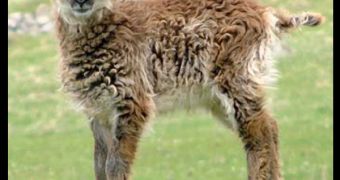A team of researchers led by Dr Hugues Dardente and Professor David Hazlerigg at the University of Aberdeen and including Professor Andrew Loudon at Manchester’s Faculty of Life Sciences, managed to identify the ‘switch’ that controls seasonal hormone production.
This switch is based on the changing daily cycle of light and darkness, and it gives an insight on the relationship between the daily and the seasonal timing in mammals, suggesting that this mechanism has stayed basically unchanged during vertebrate evolution.
The ability of this kind of mechanism to adapt, will be decisive for the survival of the animals during season changes, in an ever warming world.
To better understand this coping mechanism, the researchers looked at a rather primitive species – the Soay sheep, because it relies mostly on seasonal biology to survive in the wild on the North Atlantic islands of St Kilda.
Back in 2008, the team found the key signal to the brain, that controls seasonal behavior and physiology: it is a thyroid stimulating hormone (TSH) that controls the activation of seasonal breeding in sheep, and it is regulated by day length.
But at that time, they did not know the way that changes in the daily cycle of light and dark triggered the production of high levels of TSH in the spring and a decline in the autumn.
In this new study, the researchers have “identified that ‘switch’, linking the daily ‘circadian clock’ to the yearly seasonal clock,” Professor Loudon said.
“This reveals a potential genetic mechanism as to how local populations may adapt and is going to be crucial as we explore the implications of global climate change for timing of breeding and production of young.
“The evidence is that species in the high arctic are going to be in serious trouble, as they will not be able to adjust their annual clock to match altered local seasons.”
Professor Hazlerigg explained that “understanding this process is vital as seasonal changes in day length are used by animals to synchronize major life-history events such as migration, moulting, and reproduction.
“It enables seasonal animals to anticipate and prepare biologically for what is going on in the outside world rather than adapting to it once it has happened, for example growing a thick coat in preparation for winter.
“Because the switch we describe is based on day length, it performs reliably, regardless of whether we have snow in November or an unseasonably warm March.”
This mechanism could be dangerous for the survival of the species because as it is based on day length, it basically ignores global warming.
For example, a warm spring could lead to birds getting at their spring feeding area after the peak of food availability, and that would endanger their breeding success.
The findings were published in Current Biology.

 14 DAY TRIAL //
14 DAY TRIAL //